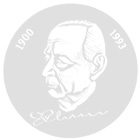Semiconductor laser and integrated optics for application in communication sytems
The laser in Optcal Communication Systems
Since beginning his research in the 1960s, Prfessor Yasuharu Suematsu of Japan has contributed signifcantly to the development of optical communication based on fiber optic networks. His scientific interest was primarly focused upon semiconductor lasers, which constitute one of the key elements of such systems; without them the tremendendous progress in optical communication which is still going on could hardly have taken place.
Professor Suematsu was the first to point out the potential of semiconductor lasers as high bitratr transmitters and initiate both theoretical and experimental work on the subject. He presented the results of this research to the scientific community on the occasion of the 1967 International Semiconductor Laser Conference in Las Vegas. In particular, he developed concepts og high frequency modulated lasers at a time when it was not yet possible to drive a laser diode under cw operating conditions.
A further area of particular interest to professor Suematsu has been the spectral peoperties of semiconductors lasers. Following hist investigations of the transmissions properties of optical fibers he soon recognized the need dor dynamic single mode (DSM) lasers if signals were to be transmitted over long distances. As a consequence Professor Suematsu devoted much of his subsequent work to DSM-lasers. He has made valuable contributions in the fields of physics and technology, notably with respect to the development of distributed feedback (DFB-) and distributed Bragg refector (DBR-) lasers.
DFB- and DBR-lasers not only exhibit dynamic single mode behavior, but also lend themselves to monolithic integration. As a consequence Professor Suematsu has dedicated much time to this question, and his original research provided the fundamentals for a whole group of devices called optoelectronic or photonic integrated circuits (OEICs or PICs, repectively).
The award of the Eduard Rhein Prize is in honor of the outstanding nature of Professor Suematsu ‘s work over the course of three decades, which, by developing and providing key components, has helped to render the introduction of optical communication possible. Professor Suematsu ‘s scientific career has always been characterized by his capacity to combine basic physics, technological aspects, and industrial application with such succes that the results of his research have received worldwide recognition.
Dr. Norbert Grote, Heinrich Hertz Institute, Berlin
